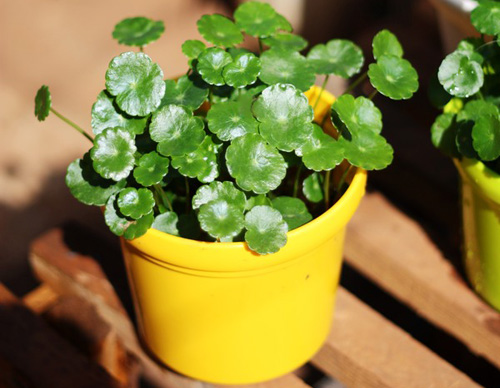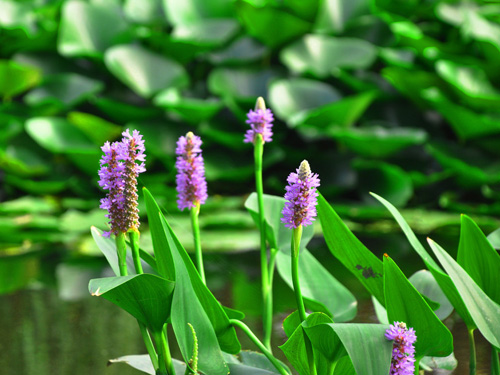Cultivation and management methods of Qianqu (Fraxinus mandshurica)
Qianchi (Fraxinus mandshurica)
Scientific name: lythrum salicaria
Aliases: Fraxinus mandshurica, Fraxinus mandshurica, Phaseolus angustifolia, whiplash, poisonous grass
Families and genera: Chlorophyllaceae
Morphological features: perennial water herbs. Stem erect, quadrangular. Leaves opposite or 3-whorled, sessile, narrowly lanceolate. Long spikes terminal, many small flowers densely growing in leafy bract axils, petals 6, flowers rose-red or blue-purple.
Ecological habits: Xi Sheng in the ditch edge, moist, shallow water environment. The environment requires adequate sunshine and good ventilation. Grow in swamps, waterside wetlands and riversides and ditches. It can be cultivated both in water and on land.
Propagation method: it is easy to survive with sowing, cutting and ramet. After the mature seeds are harvested in autumn, the seeds will be sown in April and germinate in-week. If they can be transplanted in time, they will blossom in the same year. The best cuttage is from June to July, and the cuttings of the same year will take root in about 20 days. Ramet is suitable to be carried out at the beginning of germination in spring.
Cultivation and management: potted garden soil or pond mud is added with a small amount of cake fertilizer or compound fertilizer. After planting, put it in a sunny and well-ventilated place, keep the basin soil moist or shallow water with a depth of 5 to 10 centimeters, and pay attention to replenishing water at ordinary times. It is not necessary to apply fertilizer, and if the plant leaves turn yellow, you can apply cake fertilizer and water twice as appropriate. In order to control the plant height, the heart should be removed twice during the growing period. Cut off the residual flowers after flowering to promote the blooming of the next batch of flowers. In winter, you should cut off all the old branches, keep the basin soil moist, and put it in a leeward and sunny place to survive the winter.
Florescence: June to September.
Flower language: loneliness.
Garden use: waterside cluster planting or pool planting. Flower border, cut flowers.
Medicinal efficacy: it has antibacterial, antihypertensive, anti-inflammatory and antispasmodic effects.

It is a perennial herb belonging to the family Chloridaceae, which is most suitable for planting in shallow shore clusters or ponds, and can also be used as flower border materials and cut flowers, potted or swamp gardens. it is used in medicine to clear heat and cool blood, as well as hypoglycemic effect. let's take a look at the planting technology of Chichu.
The growth habit of Lysimachia chinensis
It is also cultivated in all parts of China, distributed in Algeria, North America and southeastern Australia in Asia, Europe, Africa, North America and Australia, and is born on riverbanks, lakes, streams and ditches and wet grasslands. Like strong light, strong cold resistance, like water and humidity, do not have strict requirements on the soil, and grow better on deep, humus-rich soil.
Propagation techniques of Chimonanthus chinensis
1. Sowing: spring sowing in March to April, mixing the seeds with fine soil before sowing, then sowing on the bed, covering the soil 2.5 cm, finally covering the grass and watering, uncovering the grass immediately after 10-15 days after sowing, the seedling height is about 25 cm.
2. Cuttage: strong branches were selected in spring, cut into about 30 cm long, leaves were removed, and the depth of oblique sowing was 1 beat 2 for cuttings, pressed, watered and moisturized, and transplanted after rooting and long leaves.
3. Ramet: the root clump was dug up from April to May in spring, cut the bud into a clump, and planted in the wetland where sufficient base fertilizer was applied.
Planting Management of Qianqingcai
1. Qianchi has strong vitality and extensive management, but it is necessary to choose an environment with sufficient light and good ventilation. Open-field cultivation is mostly planted in the shallow water areas and wetlands of lakeside gardens in the park, and potted plants can be planted in the courtyard. Appropriate amount of rotten chicken manure or cake fertilizer should be applied to the cultivated soil.
2. From planting to closing, the plants were ploughed and weeded 3 or 4 times a year. Applying nitrogen fertilizer or compound fertilizer once in spring and summer, applying compost or stable manure once after autumn, and often keeping the soil moist is the most important measure to grow Chikuchi. Weeds and water moss should be removed in time during the growing period, and potassium dihydrogen phosphate should be applied two or three times before flowering and during flowering. Keeping the soil moist regularly can promote plant growth.
3. In late October, the aboveground part gradually withered, and the aboveground plants were cut off with branch shears, and the term of office naturally overwintered in the open field. Pot plants must be moved to a low-temperature cold shed to survive the winter, and the pot soil must be kept moist throughout winter, and the temperature should be controlled at 0 ℃ to 5 ℃, so as to avoid sprouting ahead of time in winter. It is usually planted once every two or three years.
Cultivation and Propagation of Chimonanthus chinensis
Chimonanthus chinensis is a perennial herb of the family Echinaceae, which is called Fraxinus mandshurica, Fraxinus mandshurica and Shuizhi brocade, which is mostly used for waterside planting and pool planting, as well as the flower border background of aquatic flower garden. Its origin in Europe and Asia warm temperate zone, like light, like water wet, more hardy, in the north and south of our country can overwinter in the open field.
Cultivation and management
Qianchi has strong life and extensive management, but it is necessary to choose an environment with sufficient light and good ventilation. Open-field cultivation is mostly planted in the shallow water areas and wetlands of lakeside gardens in the park, and potted plants can be planted in the courtyard. Appropriate amount of rotten chicken manure or cake fertilizer should be applied to the cultivated soil. Remove weeds and water moss in time during the growing period. Potassium hydrogen phosphate should be applied two or three times before flowering and during flowering. Keeping the soil moist regularly can promote plant growth.
In late October, the upper part of the field gradually withered, cut off the aboveground plants with branch shears, and the term of office naturally overwintered in the open field. Pot plants must be moved into a low-temperature cold shed to survive the winter, and the basin soil must be kept moist throughout the winter, and the temperature should be controlled at 0 degrees Celsius to 5 degrees Celsius, so as to avoid sprouting ahead of time in winter. It will be planted one time in two or three years.
Cuttage propagation
The paddy field was ploughed 3 to 5 days before cutting, and the mandarin removed weeds and other debris. Every 4 to 5 meters-50 cm wide operation path, put 2 cm to 3 cm deep water, can be cut from March to before flowering.
The top part of the branch, which is pure, robust and pest-free, is 20 cm to 30 cm long, and the □ is about 0.5 cm away from the bud. The lower leaves can not be removed. The row spacing of cuttings is from lO cm to lO cm, and the depth is from 3 cm to 5 cm.
After insertion, pour 5 cm deep water for 7 days until lO is born to take root. There should be no shortage of water before rooting. After spraying insecticides and fungicides, mainly to control aphids. Fertilizer can be applied properly in the paddy field after half a month.
- Prev

Cultivation and management methods of Lentinus edodes (Lentinus edodes, coriander)
Lentinus edodes grass (copper money grass, South American coriander) scientific name: hydrocotylevulgaris alias: common coriander, money lotus, water money, copper money grass morphological characteristics: perennial water or wet herbs, with trailing, 5 centimeters high. The nodes often take root, and the top of the stem is brown.
- Next

It is good to water flowers with water from goldfish and aquarium with tropical fish.
Watering flowers with fish water can be irrigated directly. Not only there is little difference between water temperature and air temperature, but also the water quality is soft, high in nutrients and air. The fish basin water is directly exposed to the open air, and there is little difference between the fish basin water and the natural temperature,-some nutrients decompose quickly, the air content of the aquarium water is less, and the temperature difference between the aquarium water and the natural temperature is large.
Related
- Fuxing push coffee new agricultural production and marketing class: lack of small-scale processing plants
- Jujube rice field leisure farm deep ploughing Yilan for five years to create a space for organic food and play
- Nongyu Farm-A trial of organic papaya for brave women with advanced technology
- Four points for attention in the prevention and control of diseases and insect pests of edible fungi
- How to add nutrient solution to Edible Fungi
- Is there any good way to control edible fungus mites?
- Open Inoculation Technology of Edible Fungi
- Is there any clever way to use fertilizer for edible fungus in winter?
- What agents are used to kill the pathogens of edible fungi in the mushroom shed?
- Rapid drying of Edible Fungi

